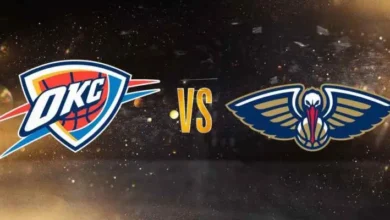Mastering Basketball Drawings: Tips and Techniques for Creating Dynamic Art

Introduction
Drawing basketball scenes can be an exciting and rewarding experience, whether you’re an aspiring artist or simply someone who loves the sport. Capturing the energy, motion, and intensity of basketball in your drawings requires a blend of creativity, skill, and attention to detail. In this article, we’ll explore various techniques and tips to help you master the art of drawing basketball scenes, focusing on the key aspects that bring your illustrations to life.
Understanding the Basics of Basketball Drawing
Before diving into complex scenes, it’s essential to grasp the basic elements that make up a basketball drawing. These include the proportions of the human body, the design of the basketball itself, and the key features of a basketball court.
- Human Anatomy: When drawing basketball players, understanding human anatomy is crucial. Study the proportions of the body, focusing on how muscles are defined during movement. Pay attention to the poses and stances typical of basketball, such as jumping, shooting, or dribbling, as these actions require specific body dynamics.
- The Basketball: The basketball is a central element in your drawing. It should be round, with visible seams that help convey its texture and realism. The position of the basketball in relation to the player can add dynamism to the scene, such as a ball in mid-air during a shot or being dribbled at high speed.
- Court Elements: The basketball court provides the setting for your drawing. Including key features like the hoop, backboard, and court lines can help ground your scene and add context. The perspective from which you draw the court can also create a sense of depth and realism.
Capturing Motion and Energy
One of the most challenging aspects of drawing basketball scenes is effectively capturing motion and energy. Basketball is a fast-paced sport, and your drawing should reflect the intensity of the game.
- Dynamic Poses: Use dynamic poses to convey movement. For example, a player in mid-jump or a quick pivot can illustrate the energy of the game. Exaggerating certain elements, like the extension of limbs or the arch of a jump, can enhance the sense of motion.
- Action Lines: Incorporating action lines can help guide the viewer’s eye and emphasize movement. These lines, often faint and sketch-like, can follow the trajectory of the ball or the motion of a player, adding a sense of speed and fluidity to the drawing.
- Contrast and Shading: Using contrast and shading can create the illusion of movement. Darker, more intense shadows can suggest speed and force, while lighter, more diffused shading can convey softer, slower motions. Experimenting with these techniques can add depth and dynamism to your drawing.
Detailing Your Drawing
Details play a significant role in bringing your basketball drawing to life. From the texture of the basketball to the expression on a player’s face, attention to detail can elevate your work from a simple sketch to a compelling piece of art.
- Facial Expressions: Capturing the emotions of the players can add a powerful narrative element to your drawing. Whether it’s the determination of a player going for a dunk or the focused gaze during a free throw, facial expressions can convey the intensity and stakes of the game.
- Clothing and Equipment: The way clothing and equipment move can also add realism to your drawing. Basketball jerseys, shorts, and shoes should reflect the motion of the players, with folds and creases that correspond to their actions. Don’t forget to include details like logos, numbers, and team colors for authenticity.
- Background Elements: Including background elements such as spectators, benches, or even the gymnasium lighting can add context and atmosphere to your drawing. These elements help to situate the players within a larger scene, making your artwork more immersive.
Practicing and Refining Your Technique
Like any form of art, practice is key to improving your basketball drawing skills. Regular sketching and experimentation will help you refine your technique and develop your unique style.
- Reference Materials: Use reference materials such as photos, videos, or even live games to study how basketball players move and interact on the court. Observing real-life dynamics can inspire and inform your drawings.
- Experimentation: Don’t be afraid to experiment with different styles, perspectives, and techniques. Whether you prefer a more realistic approach or a stylized, abstract interpretation, exploring various methods can help you discover what works best for you.
- Feedback and Critique: Sharing your work with others and receiving constructive feedback can be invaluable. Join art communities or seek out mentors who can provide guidance and help you grow as an artist.
Conclusion
Drawing basketball scenes offers a unique opportunity to combine a love for art with a passion for sports. By mastering the basics, capturing motion and energy, paying attention to details, and continuously practicing, you can create dynamic and compelling basketball drawings. Whether you’re illustrating an intense game moment or a simple player portrait, the techniques discussed in this article will help you bring your basketball art to life.




